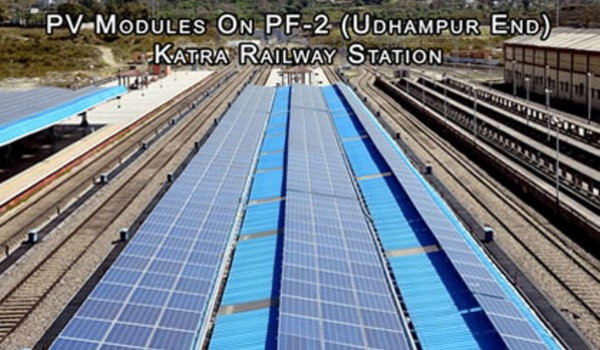Public procurement of solar power systems in India
Indian Railways consumes 2% of the country’s electricity, and was traditionally heavily reliant on fossil fuels. The Indian Railways Solar Mission plans to overhaul this by installing 1,000 MW of solar power generation capacity by 2020. Public-private partnerships will enable developers to utilise rooftops and spare land for the installation of photovoltaics, with the electricity generated being sold back to the Railways.

The challenge:
Up to 30% of India’s GDP is spent on public procurement. Given the large size of public spending, sustainable procurement through responsible purchasing can be a key driver for sustainable production and consumption in the country.
Looking at energy demand, Indian Railways are one of the largest public sector consumers. They use 18 billion units of electricity annually – 2% of the country’s total consumption. This represents a financial burden, and has a significant environmental impact, with most production still dependent on fossil fuels.
The measure:
In 2015, the Minister for Railways unveiled the Indian Railways Solar Mission plan. The headline target of the mission is to install 1,000 megawatts (MW) of solar power generation capacity on the rail network by 2020.
A large part of the plan sees the Railways making rooftops and spare land available for the installation of photovoltaics. This will be facilitated by setting up a public-private partnership with developers, who will be invited to carry out installation, operation and maintenance. Indian Railways will enter long-term, 25 year Power Purchase Agreements, allowing developers to use rooftops and land without charge, in return for selling power back to the railways at a fixed rate per unit. The government will also be providing investment subsidies to developers to cover part of the upfront costs.
In addition to these large scale projects, smaller changes are also being made to reduce the Railways’ dependence on fossil fuels. These include the integration of off-grid solutions such as solar based lighting, solar water heaters, and solar cookers at remote locations. In total 7000 stations will be fed with solar power. Train carriages themselves have also been fitted with solar panels, generating clean energy to power the interior lighting and air conditioning.
In the first phase of the programme 25 GW of rooftop and 50 GW of ground-mounted capacity will be installed in two states. In the second phase, the programme will spread to 9 other states with 60 GW of rooftop and 660 MG ground-mounted capacity. During the third phase, 400 MW rooftop and 3,800 MW ground-mounted capacity will be installed across the rest of the country.
To pay for these solar installations, as well as other renewable energy sources, the Government of India has collected €1.5 billion through a coal tax. The tax applies both to coal mined in India and imported from elsewhere.
Lessons learnt:
In order to complete the mission, attention will have to be paid to load balancing options to overcome the intermittency of solar power. This is likely to need the integration of energy storage solutions, or other energy sources such as wind power to ensure consistent supply of electricity that can meet demand. Regional variations in terms of legislation and approaches may also complicate implementation.
Further deployment:
The measure is noteworthy mostly for its scale and such a bold measure is easily transferable to other, especially developing, countries, provided the ambition exists. It is estimated at GML 8
Links:
http://www.lifegate.com/people/lifestyle/india-railway-stations-solar-power
https://climatepolicyinitiative.org/publication/decarbonization-indian-railways-assessing-balancing-costs-policy-risks/
http://www.logisticstoday.in/2017/03/29/indian-railways-embraces-solar-wind-as-way-ahead/
